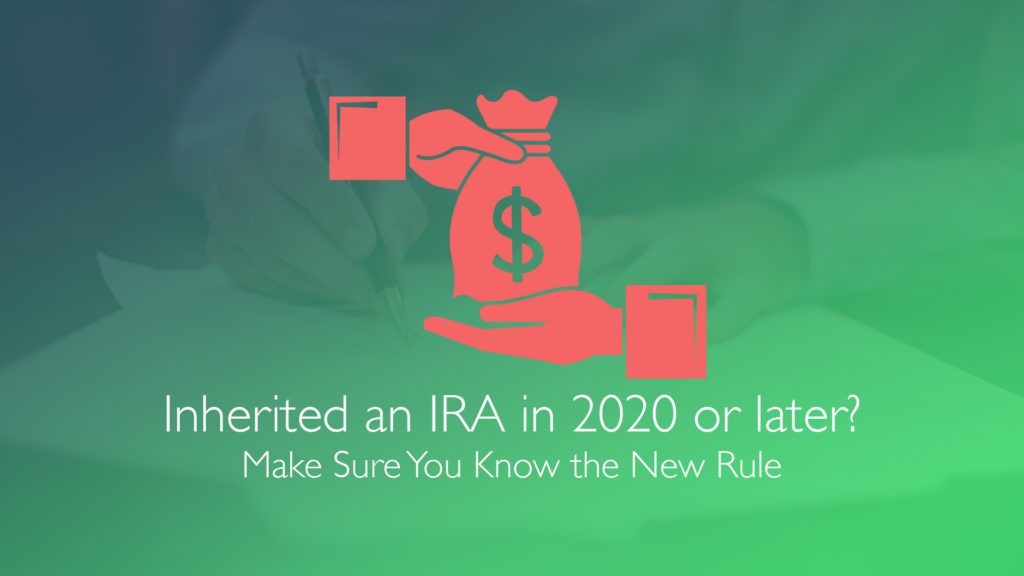While an inheritance can be a positive financial event, mourning the loss of a loved one and acclimating to your new financial situation can be one of life’s more stressful transitions. There are also potential pitfalls and opportunities to be aware of. When meeting with new clients dealing with an inheritance, it is critical to address how the accounts should be transitioned to the new owners. At the beginning of 2020, the SECURE Act changed rules for beneficiaries of IRA accounts. Below we answer a few questions we typically hear about inheriting an IRA.
What is the 10-year rule?
Most people who inherit an IRA must withdraw the assets within 10 years of the original IRA owner’s death. You can either withdraw the whole IRA balance at once, or take incremental distributions leading up to the 10-year deadline.1 Before making withdrawals from your inherited IRA, you should consult with a trusted financial advisor, due to the tax implications of making a withdrawal.
Are there exceptions to the 10-year rule?
- If the deceased IRA owner was your spouse, you can treat the inherited IRA like an IRA of your own. If it’s a traditional IRA, you must take RMD’s from it once you reach age 72 and the IRS taxes those distributions as regular income. If it is a Roth IRA, you aren’t required to take RMD’s.
- Certain non-spousal IRA beneficiaries still have the chance to stretch inherited IRA distributions over their remaining lifetimes, using Internal Revenue Service formulas (a choice available to most IRA beneficiaries before 2020). You may choose this option if you are less than ten years younger than the original IRA owner. You can also elect to do this if you meet the SECURE Act’s definition of a disabled or chronically ill individual (you have a life-altering physical or mental impairment or require extended care).1,2
- If a child inherits an IRA, they can take distributions based on the child’s life expectancy until the age of 18, at which point the 10-year rule applies.1
- The new rules do not apply to inherited IRA’s whose initial owners died prior to 2020. You can stretch the inherited IRA assets according to IRS life expectancy formulas, and take RMD’s as required by the old rules.
Be aware of the 5-year rule pertaining to Roth IRA’s
If you inherit a Roth IRA that is less than five years old at the time of the original owner’s death, any earnings taken from it will count as taxable income. If the Roth IRA is more than five years old, you can take tax-free distributions from the earnings. Assets representing the original owner’s Roth IRA contributions can become tax-free distributions regardless of when the original owner opened the Roth IRA.1
Contact us today if you have any questions, or you can download our Inherited IRA account summary here.
Citations
-
NerdWallet, November 25, 2020
-
FedWeek, March 3, 2020
-
Forbes, October 28, 2020


